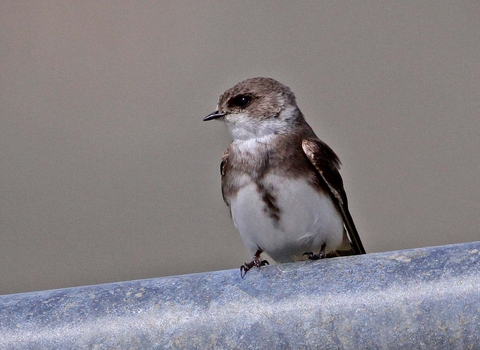
©Margaret Holland
Sand martin
The tiny, brown-and-white sand martin is a common summer visitor to the UK, nesting in colonies on rivers, lakes and flooded gravel pits. It returns to Africa in winter.
Scientific name
Riparia ripariaWhen to see
March to OctoberTop facts
Stats
Length: 12cmWingspan: 28cm
Weight: 14g
Average lifespan: 2 years
Classified in the UK as Green under the Birds of Conservation Concern 5: the Red List for Birds (2021).
Habitats
About
The sand martin is a common summer visitor to the UK, arriving in March and leaving in October. It nests in colonies, digging burrows in steep, sandy cliffs, usually around water, and is commonly found on wetland sites. The tunnels it bores can be up to a metre in length! At a chamber at the end of the burrow, four or five eggs are laid on collected straw and feathers. Sand martins are sociable birds and will nest together in summer and gather to roost in large numbers in autumn; eventually they migrate to Africa to spend the winter.What to look for
Our smallest swallow, the sand martin is brown above and white below, with a brown band across its breast and a short, forked tail.Where to find
Widespread.Did you know?
In North America, the sand martin is known as the 'bank swallow' because of its nesting habits. Its Latin name also means 'bank'. In India, it is known as the 'collared sand martin'.Watch
Sand Martin (https://vimeo.com/452225000)
Sand Martin by John Bridges
